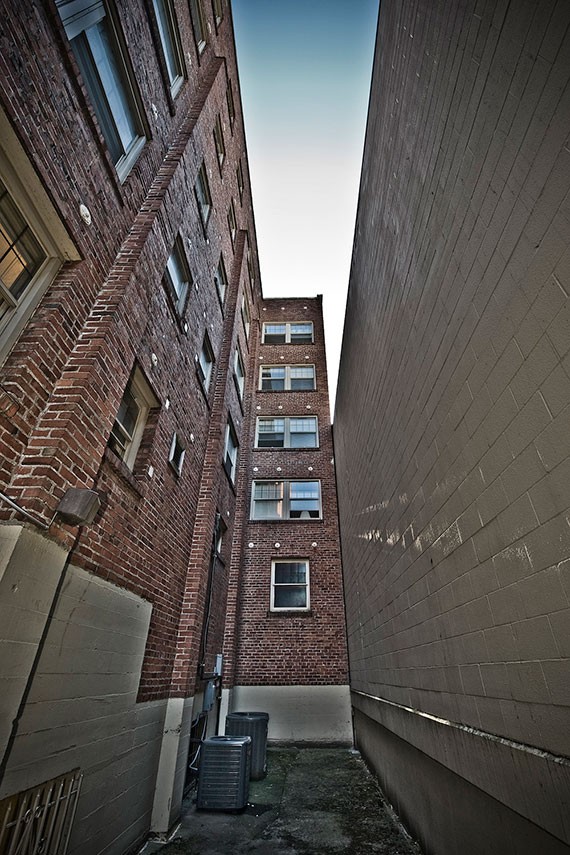Multi-media artist, muralist, and curator, Moses Sun fuses hip-hop, jazz, Afrofuturism, and the Black southern diaspora into a dynamic body of work based on childhood experiences that blurs the lines between digital and analog art. He was recently featured in Crosscut as one of the “Four Rising Seattle Artists to Watch.”
In our conversation, we discuss creative dedication, belonging, and the healing power of art.
You’ve been pretty busy since you painted the M in the Black Lives Matter mural on Pine Street a couple years ago. How different is your life now versus then?
I live in a state of gratitude and do my best to be present. Mindful of the moment. A couple of years before painting the M with the Vivid Matter Collective, I was juggling family, 50 to 60 hours a week working full-time, and freelance until I was involuntarily committed to a regional psychiatric hospital for twenty-one days. I was worse off before I went in. Yet art had begun to heal me in ways I did not realize. For the next two years I isolated myself and made art in my home studio daily. When I got the DM from Takiyah to paint the M, something moved me to say yes. I have been saying yes to the creative muse within. Building an evolving art practice full of experimentation and collaboration.
That’s beautiful. And you just curated an impressive group exhibition at the Museum of Museums, Hollaback to the Future: Afrofuturist Dimensions vol. 1, where a variety of international artists explored the idea of the future of the Black experience. Can you tell me about how this concept came to be, how you chose the artists?
Thank you. The catalyst for Hollaback to the Future was conversations with Nyame Brown. He’s an Afrofuturist, visionary painter, teacher, and art historian based in Oakland. We started talking about how Afrofuturism is evolving and creating conversations across the African diasporas of the world. We imagined an experience that would be less exhibition and more like a conversation. It’s our call and response to the diaspora. Hollaback to the Future is about acknowledging our ancestors and elevating visions through the Pan-African clay that is common between all of us. I reached out to artists, animators, industrial, fashion, graphic, and UX designers. I feel like everything came together organically once the intention was clear. Bring together a congregation of Afrofuturist practitioners into a sacred space where their ideas could be elevated to inspire conversation, appreciation, and celebration.
Can you tell me more about the hip-hop ethos of “grinding” and how you employ it as a creative technique?
Grinding is putting in the work. I’m in the studio night and day. There’s the physical studio and the one in my head. Like a hip-hop producer, I make beats (multiple bodies of work) that I sample to create a series like 21 Chambers: A New Beginning. I create analog and digital paintings, drawings, and collages that act as both inspiration and palette.
Interesting… So, while some artists would treat each new piece as both precious and permanent, you’re saying your process is to create stages of work that are meant to be further manipulated, combined, and literally “remixed?”
Yes. It’s a practice I have developed over time so the creative isn’t as precious as the process. It makes the journey an adventure.
Your artist statement says that, “Whiteness has taken what it pleases, disposing of what it deemed too much and too loud.” Can you tell me more about being supported by communities of color, and even finding strength in loudness?
Conversation about shared experiences living as a person of color in the United States helps a lot. We find common ground and go from there. Sometimes it’s just a nod, a laugh, or breaking bread with one another. It’s hard to put into words. There’s a tone we have with one another that is about cooperation instead of competition.
The “too much and too loud” line reminds me of the idea that if you are “too much” for your people, then they are not your people. I love how affirming that idea is, especially for young people who feel restricted or lonely.
Wow, I love your perspective. That’s a new way of looking at it. I have found that people who say you’re doing too much, too loud, etc. are speaking from their own perception of what’s possible. It actually has nothing to do with you.
Amen. Speaking of big possibilities, congratulations on being awarded an Amazon Artist in Residency grant! What do you have planned for that timeframe?
Thank you! I’m very excited to start. I will be focused on an experiential sculpture concept called Diaspora Portal. The portal will tell the story of multiple generations of a family friend. We had our first interview over dinner a couple of days ago.
That’s super exciting, can’t wait to see it!
Thank you! I’m looking forward to sharing.
See Moses Sun's 21 Chambers: A New Beginning at the J. Rinehart Gallery through Sept 28.


















